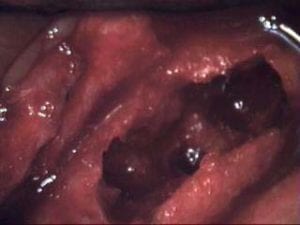Merck’s Secret Settlement with Fosamax Jaw Death Plaintiff
You have to give it to Shirley Boles, 74 – she just doesn’t give up. Today concluded the third in a series of trials against drug giant, Merck, over the osteoporosis drug, Fosamax. Boles of Walton Beach, Florida, took the drug for nine years and developed jaw necrosis.
On Tuesday, September 18, Merck struck a confidential deal with the estate of Ms. Boles. Merck said it was not a settlement but a confidential stipulation on damages.
A jury in October 2010 offered her an $8 million award against Merck which was reduced by Judge Joseph Keenan, a federal judge in Manhattan, following the second trial of Boles v. Merck. Her attorneys wanted a third retrial on the damage amount only.
Osteonecrosis of the jaw (ONJ) is also known a jawbone death which has been associated with the use of bisphosphonates, a class of drugs used to treat osteoporosis. ONJ can lead to infection, ulcers, and non-healing wounds. Boles used Fosamax from 1997 to 2006 and suffered jaw complications and infections following a tooth extraction. That led to several more surgeries. Her health was never the same.
Fosamax is one of many bisphosphonates prescribed to interfere with the natural process of bone remodeling, that is, the removal and redeposit of bone throughout our lifetime. Besides jaw tissue death, bisphosphonates are linked to atypical fractures of the femur and University of Washington researchers found Fosamax use doubled a woman’s risk of developing atrial fibrillation, a chronic irregular heart beat that can cause dizziness and fainting as well as fatigue. In rare cases it can lead to a blood clot and stroke.
The U.S. Food and Drug Administration (FDA) approved Fosamax in 1995 to treat osteoporosis, or bone-thinning associated with menopause. Two years later it was approved to prevent osteoporosis. Fosamax is the only osteoporosis drug that promises to build bone in postmenopausal woman. It’s also shown to reduce hip fractures by 63 percent.
Boles’ first trial ended in a mistrial when one juror was said to have thrown a chair in the jury room and the second trial resulted in the $8 million verdict. Judge Keenan decided that amount was unreasonably high and reduced it to $1.5 million, as if a judge’s opinion should supersede the jury system, though it often does. Merck had wanted the entire jury award thrown out, according to Bloomberg.
The Boles case was the second of two bellwether cases charging that Fosamax is a dangerous and defective drug and that Merck misrepresented its safety and failed to warn doctors and the public about the potential for jawbone tissue death.
At least 900 other cases are in line and are closely watching the outcome of the Boles case. The first trial ended in a jury decision in Merck’s favor as did three out of the first four bellwether cases.
Share This



